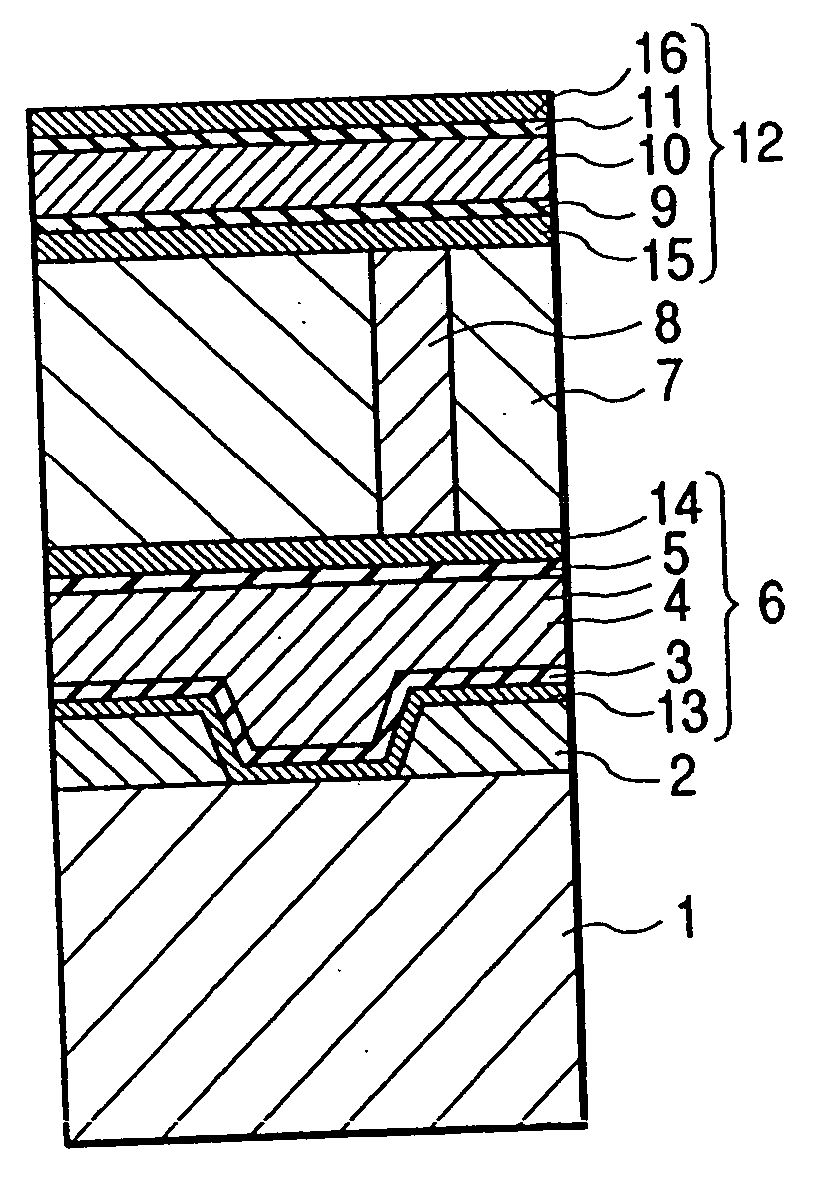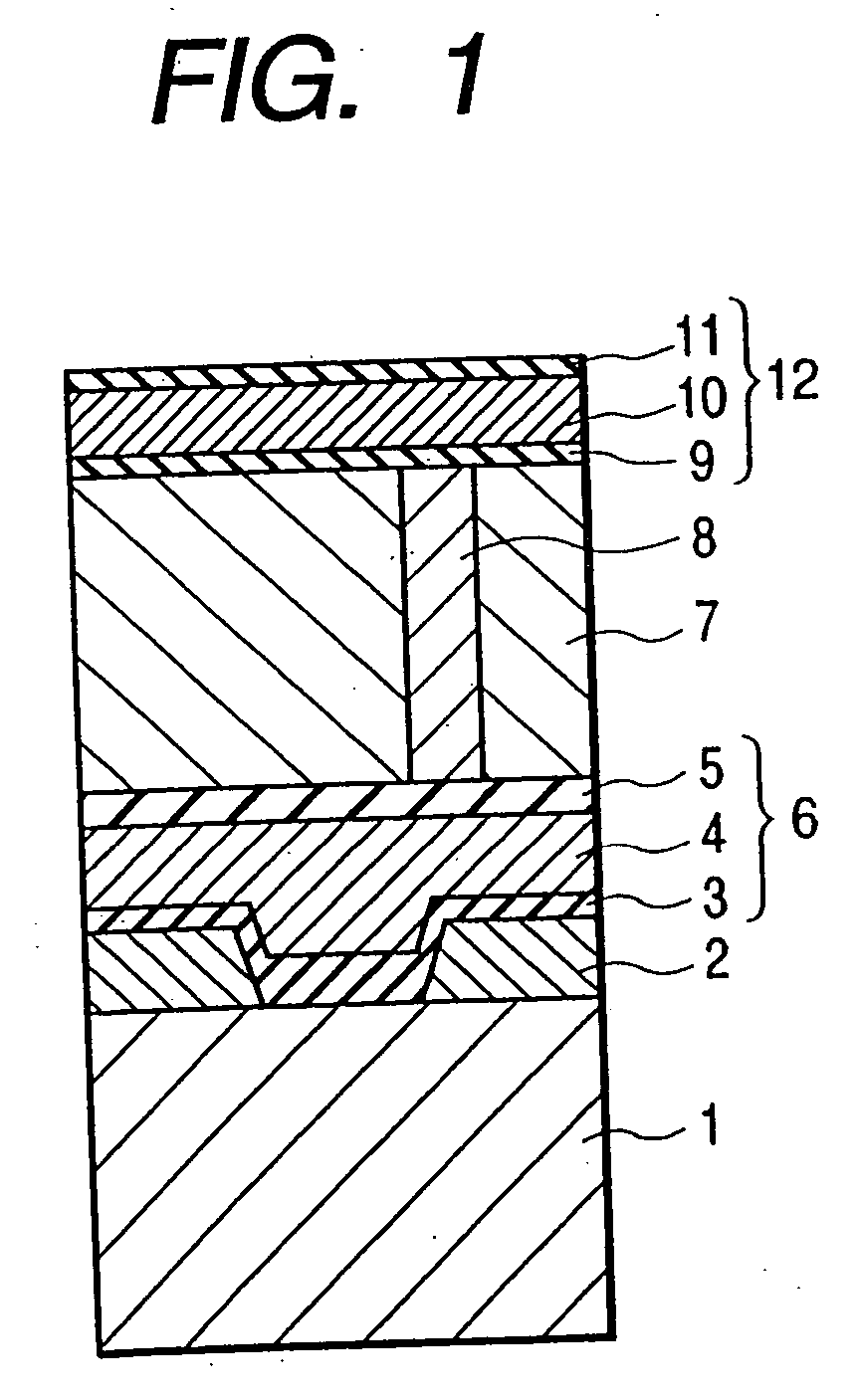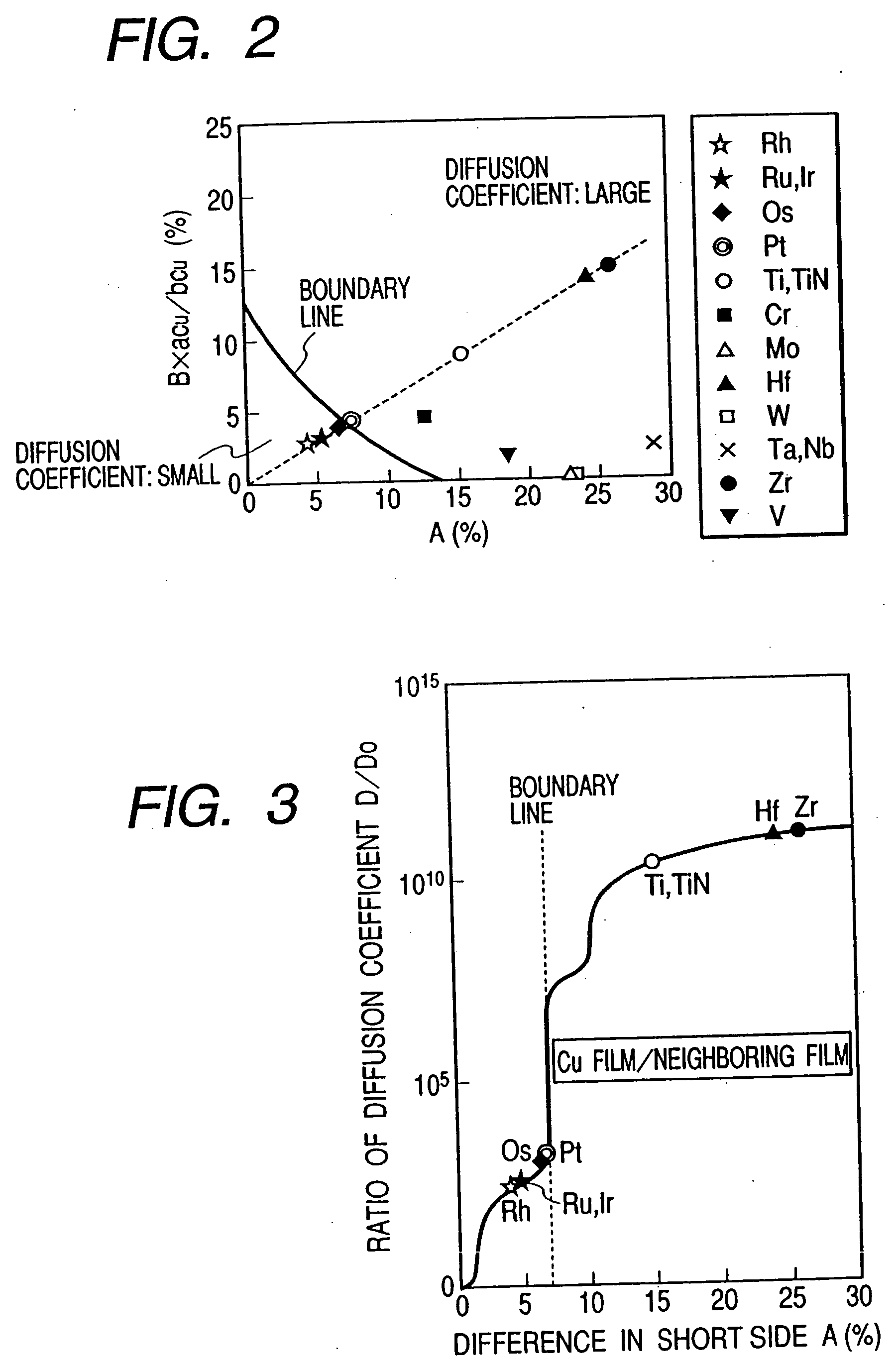Semiconductor device and method for producing the same
a technology of semiconductor devices and semiconductors, applied in semiconductor devices, semiconductor/solid-state device details, electrical apparatus, etc., can solve the problems of voids, interconnect breakdowns, and voids, so as to detract from the characteristics of devices, and the diffusion of copper (cu) atoms into silicon (si) substrates or insulating films,
- Summary
- Abstract
- Description
- Claims
- Application Information
AI Technical Summary
Benefits of technology
Problems solved by technology
Method used
Image
Examples
first embodiment
[0032] First referred to is FIG. 1, which shows a cross-sectional structure of the layered interconnect structure part of a semiconductor device of the invention.
[0033] As in FIG. 1, the layered interconnect structure in the semiconductor device of this embodiment comprises an insulating film 2 of, for example, silicon oxide as formed on a silicon substrate 1, in which a first layered interconnect structure 6 composed of a neighboring film 3, a conductor film 4 and a neighboring film 5 is connected with the substrate 1 via a contact hole as formed through the insulating film 2. In this, an insulating film 7 of, for example, silicon oxide is formed on the first layered interconnect structure 6, and a via 8 of, for example, tungsten (W) is filled in the via hole as formed through the insulating film 7. Through this via 8, a second layered interconnect structure 12 composed of a neighboring film 9, a conductor film 10 and a neighboring film 11 is connected with the first layered interc...
second embodiment
[0039] Next referred to is FIG. 7 which shows a cross-sectional structure of a layered interconnect structure part of a semiconductor device of the invention.
[0040] As in FIG. 7, the layered interconnect structure in the semiconductor device of this embodiment comprises an insulating film 2 of, for example, silicon oxide as formed on a silicon substrate 1, in which a first layered interconnect structure 6 composed of a diffusion barrier 13, a neighboring film 3, a conductor film 4, a neighboring film 5 and a diffusion barrier 14 is connected with the substrate 1 via a contact hole as formed through the insulating film 2. In this, an insulating film 7 of, for example, silicon oxide is formed on the first layered interconnect structure 6, and a via 8 of, for example, tungsten (W) is filled in the via hole as formed through the insulating film 7. Through this via 8, a second layered interconnect structure 12 composed of a diffusion barrier 15, a neighboring film 9, a conductor film 10,...
third embodiment
[0042] Next referred to is FIG. 8 which shows a cross-sectional structure of a principal part of a semiconductor device of the invention. As in FIG. 8, the semiconductor device of this embodiment comprises diffusion layers 102, 103, 104, 105 all formed on a silicon substrate 101, on which are formed gate-insulating films 106, 107 and gate electrodes 108, 109 to construct MOS transistors. The gate-insulating films 106, 107 are, for example, silicon oxide films or silicon nitride films; and the gate electrodes 108, 109 are, for example, polycrystalline silicon films, thin metal films or metal silicide films, or are of a layered structure comprising any of them. The MOS transistors are separated from each other by an isolation film 110 of, for example, a silicon oxide film. The gate electrodes 108, 109 are covered with insulating films 111, 112, respectively, of, for example, silicon oxide films, entirely on their top and side surfaces. The MOS transistors are entirely covered with an ...
PUM
 Login to View More
Login to View More Abstract
Description
Claims
Application Information
 Login to View More
Login to View More - R&D
- Intellectual Property
- Life Sciences
- Materials
- Tech Scout
- Unparalleled Data Quality
- Higher Quality Content
- 60% Fewer Hallucinations
Browse by: Latest US Patents, China's latest patents, Technical Efficacy Thesaurus, Application Domain, Technology Topic, Popular Technical Reports.
© 2025 PatSnap. All rights reserved.Legal|Privacy policy|Modern Slavery Act Transparency Statement|Sitemap|About US| Contact US: help@patsnap.com



